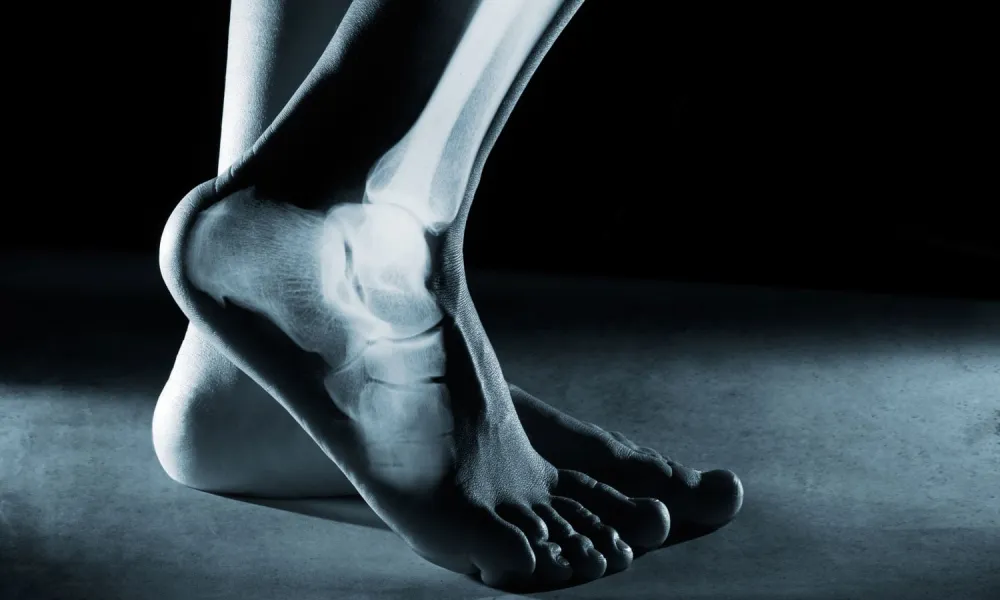
Ankle Arthrodesis
Ankle Arthrodesis
What to Expect
Ankle Arthrodesis
Joint fusion of the tibia, fibula, and talus (specific bones involved in this procedure will vary depending on the specific arthritic issues in the joint area). Ankle Arthrodesis is most likely warranted due to severe joint arthritis causing severe pain, and only when all other conservative treatments have failed.
Prior to surgery
Obtain an assisted walking device to be used post-surgery (i.e.
crutches, roll-about, wheelchair, or walker). Pick this up at a pharmacy
or medical supply store a few days prior to surgery, so you can
practice using the device. VOA will write you a prescription for
insurance purposes, if necessary. Bring the crutches, walker, or
roll-about to the surgery. Obtain pre-operative clearance, if it applies
to you. Perform the necessary pre-operative paperwork.
After surgery
Post-operative pain control is mostly performed in the hospital. You
will have a splint on your lower leg when you wake from your procedure.
The splint will start below your knee to your toes. You will be
evaluated by a physical therapist on the first post-operative day. The
physical therapist will assist with ambulation and transfers. Most
people are discharged from the hospital on the following day. You will
also be seen by Dr. Vieth and/or Jamie (PA) while you are at the
hospital. Some patients need to stay in the hospital for two nights.
Complete non-weight bearing on the extremity lasts for about 6 to 8
weeks. Patients are generallly discharged with pain control medication. A
follow-up will be conducted 10 to 14 days after the surgery. Once you
are discharged from the hospital, please call and
schedule your initial post-operative appointment. Your
splint will not be changed until your first post-operative appointment . If you experience out-of the-ordinary pain or
issues with your ankle or your splint, please call. You will likely be
asked to come into the office early for evaluation.
Discharge medications may include:
- Oxycodone/acetaminophen (Percocet) is a pain medication containing a combination of narcotic and Tylenol. Take every 4 to 6 hours for pain. This is the most common pain medication prescribed once patients are discharged from the hospital.
- Hydroxyzine (Vistaril) is a medication that may be added to your pain regimen in order to increase the strength of the narcotic pain medication. This medication is also indicated for nausea/vomiting.
- Hydrocodone/acetaminophen (Vicoden) is a pain medication containing a combination of narcotic and Tylenol. Take every 4 to 6 hours, as needed, for pain. This medication is sometimes given in place of the Percocet after discharge, if pain persists.
- You will be notified prior to discharge if your doctor wants you to take aspirin. A prescription will not be provided for aspirin. When you fill your pain medication prescription, purchase over-the-counter aspirin (325mg). Take one daily until you resume weight-bearing, in approximately 6 to 8 weeks.
Post-Operative Information
Your first post-op appointment: The splint will be removed. The incision will be assessed to assure proper healing. Sutures/staples will be removed. The patient is then placed in a short leg fiberglass cast. An x-ray will be performed. Your ankle will be casted 4 to 6 weeks from this point forward.
Second, third, etc. post-op appointments: Patients may need a second cast, depending on the duration of the cast. Casts should be on for no more than four weeks at a time. The skin will be assessed. Between 6 and 8 weeks from surgery, the patient will be placed in a removable tall walking boot (removal is okay for daily hygiene and sleeping). At this point, your doctor may allow you to begin partial weight bearing. Your doctor will instruct as to how much weight to start with. Generally, beginning with 25 lbs. is safe. The optimal method for weighing is with a scale. Patients may require an x-ray during each post-operative visit, until the fusion is visualized on radiograph (x-ray). Patients may have swelling and possible pain for up to a year after surgery, depending on the patient's activity level.
If pins were placed in your toes: Pins are sometimes necessary to re-align any deformity of the toes. The pins are usually only put in the second, third, and fourth toes. A small ball on the end of the pin helps protect the toes, so the pin extending from your foot will not catch on anything. The pins are usually removed three weeks from surgery. If, at any point, they become red or look infected, please call. Pins will be removed if there is any risk of infection. Once the pins are removed, you may experience a small amount of bleeding where the pins were located. The bleeding should stop with gentle pressure. We will place Band-Aids over the area. Please keep your foot dry for 3 to 5 days to allow the skin were the pins were located to heal.

